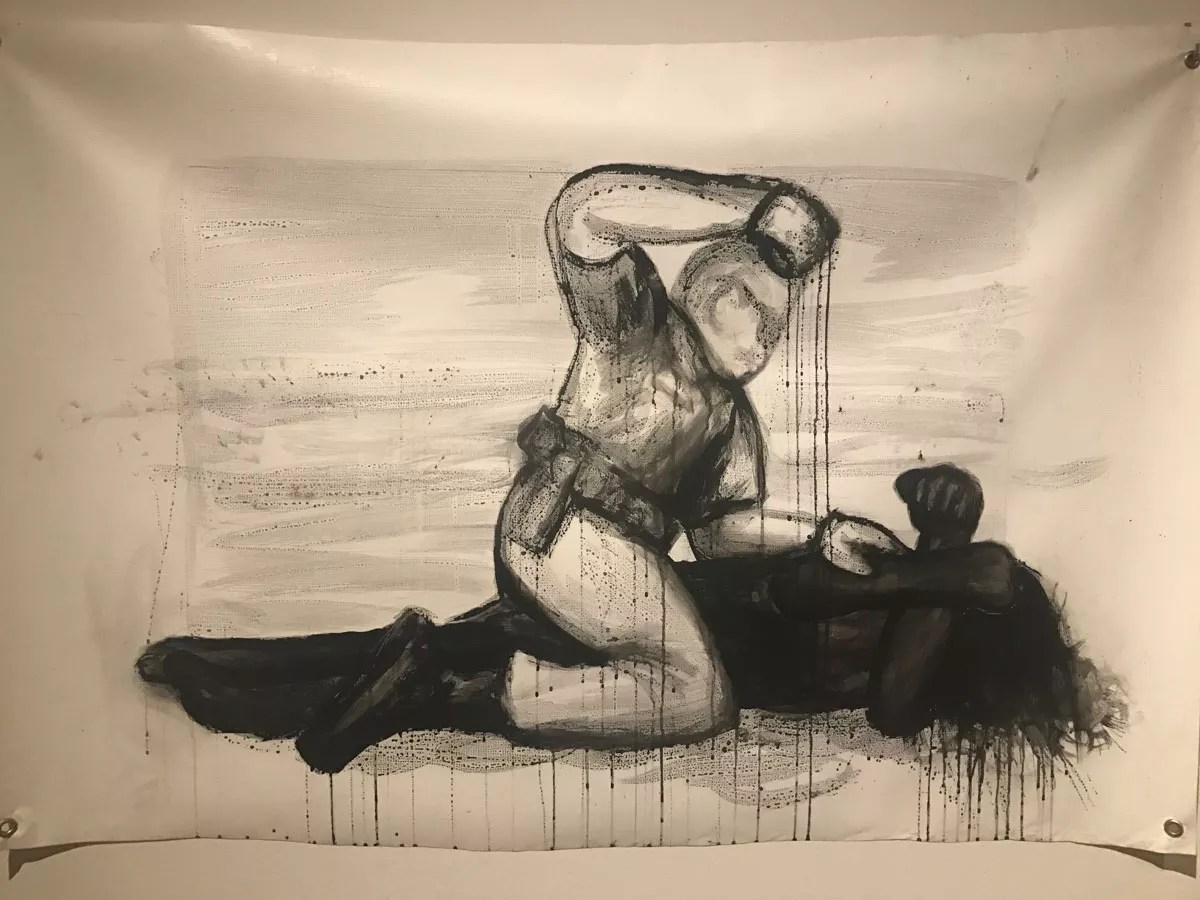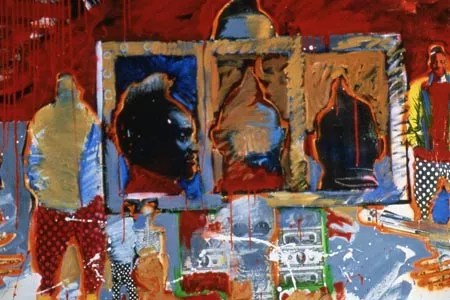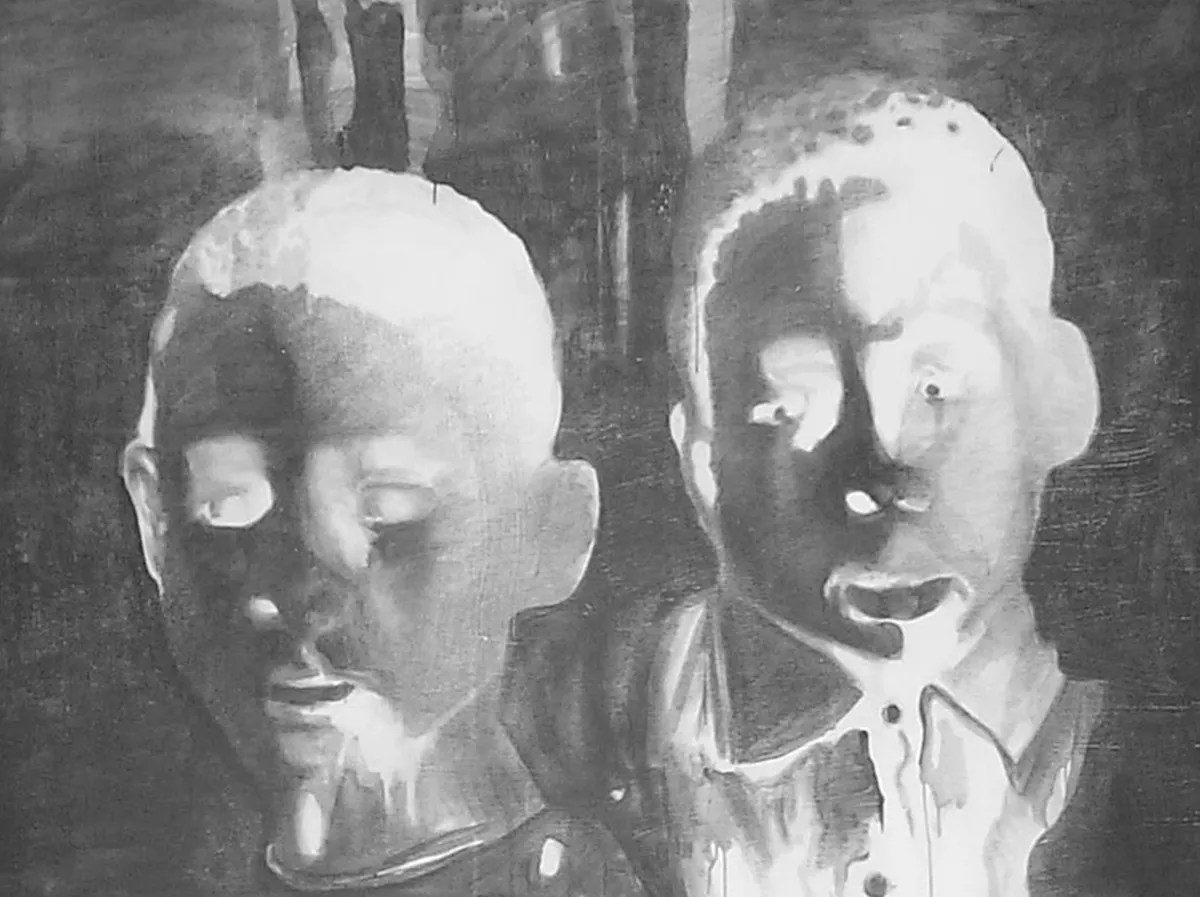
Courtesy of the artist

Audio By Carbonatix
Several recent shows may have seemed like direct responses to the Trump administration, but that’s not technically true. As examples, Presence, an exhibit looking at contemporary work by Middle Eastern artists that just closed at the Center for Visual Art, and the Denver Art Museum’s Mi Tierra, which examines the Mexican-American experience, were both conceived years ago, when our new president was just a reality-TV star. Since then, though, Trump’s anti-Muslim and anti-Mexican rhetoric has changed political realities, repositioning these shows into courageous statements about understanding, repression and inclusiveness.

Courtesy of the artist
A similar thing is going on with the eye-popping Don Coen: The Migrant Series, at the Colorado Springs Fine Arts Center. Curated by Joy Armstrong, the show comprises a suite of Don Coen’s closely related hyperrealist paintings that render, in a heroic way, the Mexican migrant farmworkers throughout the American West. The gallery guide opens with the declaration that “Don Coen’s paintings are not political statements, not meant to incite or polarize…” Backing this claim is the fact that they were painted between 2001 and 2010, when the issue of undocumented workers wasn’t as hot as it is today. And considering the character of Coen’s oeuvre, which focuses on various aspects of rural life, his interest in migrant workers could be seen as simply another aspect of his celebration of country life. The trouble with these apolitical interpretations is that times have changed, and to ennoble migrant workers unavoidably stands in opposition to those like Trump, who vilify them, making the work seem more relevant than ever. (And what are you going to believe, anyway? The gallery guide or your lying eyes?)

Don Coen, “Liliana,” airbrush acrylic and pencil on canvas.
Courtesy of the artist
Coen is without question a master of realism, one of only a handful of Colorado artists with one foot in the contemporary scene and the other in the realm of Western art. He was born in Lamar, but hasn’t lived there for decades; since the 1990s, he’s resided outside of Boulder. He was an abstract painter in the ’60s and ’70s, but after a visit to his childhood haunts on the prairie, in the early 1980s he launched a series of works characterized by photo-realist depictions of the scenery, people and animals of the plains. This super-realistic approach, which he calls “photo impressionism,” has been his signature style ever since.

Don Coen, “The Onion Harvesters,” airbrush acrylic and pencil on canvas.
Courtesy of the artist
There’s not a false note among the fifteen paintings here. Most are close-ups of faces, a style that links them to the work of Chuck Close. In “Jack,” a handsome young guy in a yellow bandanna flashes a Mona Lisa smile at the viewer. Conveying a similar sense of resignation is the impassive expression on the face of “Liliana,” whose wide-brimmed straw hat beautifully frames her lovely face. Not all of the subjects are attractive: “Manuel,” for example, has a timeworn face with blunt features. Though the head shots are extremely strong and dominate the show by numbers alone, there are a handful of exceptions that show multiple figures interacting with one another. These four figural groups have a lyrical quality that recalls the paintings of workers associated with the realist movement of the nineteenth century. This allusion to the art of the past, seen most clearly in “The Onion Harvesters” – in which arching rows of stooped farm hands recede into the background – casts the entire show into an art-history framework beyond the obvious photo-realist one.
Probably the most remarkable feature of The Migrant Series is how the paintings show off Coen’s tremendous skill. Using airbrush acrylic and pencil, he accurately conveys the appearance of his subjects and pulls off the illusion of the three-dimensional space they occupy. Though crisply rendered when seen from a distance, up close the surfaces are a riot of scribbles and drops. Coen’s compositions are perfectly conceived, and his eye for color sublime and unerring. I loved this show, and only wish it had been a full-blown Coen retrospective, an honor he richly deserves.

D
Courtesy of the artist
Another CSFAC show, Force/Resistance: Dáreece Walker and Floyd Tunson, resonates beautifully with the Coen solo – not just because both highlight accomplished contemporary realist pieces, but because Force/Resistance also explores communities stigmatized in the age of Trump. Unlike Coen, however, Walker and Tunson fully intended their individual pieces to be charged with political sentiments. Walker is an emerging New York artist who used to live in Colorado Springs, while Tunson is a contemporary master who’s spent his entire career in Manitou Springs. The show was curated by Jessica Hunter-Larsen, who came over from Colorado College after its takeover of the CSFAC last year.

Floyd Tunson, “Endangered 3,” mixed media on canvas.
Courtesy of the artist
Walker’s acrylic-on-vinyl paintings fill the initial space. They are informally presented, hanging frameless and attached to the wall by grommets. Done in black acrylic on white vinyl, they look like charcoal drawings. Walker embraces a traditional realist style, but his provocative subject matter – police brutality – gives it an edgy quality. His picture-making abilities are adept, and the smaller works from his “Police Cross Lines” series – elegant depictions of police violence – are a precarious mix of aesthetic sensitivity and brutal reality. Stepping up to the next level are two mural-sized pieces, in particular the 24-foot-long “From Ferguson to Baltimore.”
Using imagery inspired by photos from social media, Walker crams the enormous piece with a staggering array of figures broadly divided into two groups: the police and African-American men. It’s been conceived as a triptych, with an open-casket funeral in the center flanked by violent scenes on either side. This is a masterful work, and touches not only on the issues of race relations and brutality, but conjures up a variety of art references, including Diego Rivera and the other Mexican muralists, as well as the regionalist muralists of the WPA era. Come to think of it, those artists were interested in politics, too.

D
Courtesy of the artist
In the next space are the Tunson paintings, most of them from his “Endangered” series from the 1990s. Many of these are close-up portraits of young black males who have had their options limited by race and income. Tunson taught high-school art for decades and these subjects were some of his students; the artist was particularly interested in depicting those involved in gang culture. With Tunson’s eye for composition, his paintings really line up with Coen’s migrant portraits, even though Tunson’s style combines photo-realism with pop and dada, taking his work out of the realist category and away from Coen. More of a documentary artist, Tunson does not idealize these kids at all; he’s worried about them, and that comes through. This emotional quality, typically communicated by the expression in the sitter’s eyes, lend the portraits a sense of poignancy and even drama.

Floyd Tunson, “Untitled 118,” acrylic on canvas.
Courtesy of the artist
Colorado Springs, known for its conservative politics, may seem an unlikely place to encounter shows like these, but the CSFAC has almost always been a beacon of light – even from deep inside Trump’s America.
Don Coen, through May 21; Force/Resistance, through September 9. Both at the Colorado Springs Fine Arts Center, 30 West Dale Street, Colorado Springs; for more information call 1-719-634-5581 or go to csfineartscenter.org.